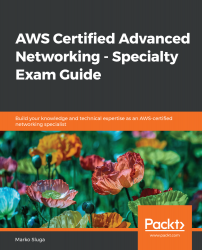The Route 53 service really takes a next generation approach to delivering DNS services. The service is fully managed and delivers a 100% SLA. The ability to manage the NS records in a simple browser interface or through the API is a great selling point, but not as important as the ability to perform routing and traffic shaping based on location, latency, and application capabilities. Reading this chapter should have at least enticed you to try and experiment a bit with Route 53, if not to move all of your domains there.
In the next chapter, we will be taking a look at managing security with API Gateway. The API Gateway service will give us the ability to deliver APIs in a uniform manner with great scalability and security features included.



